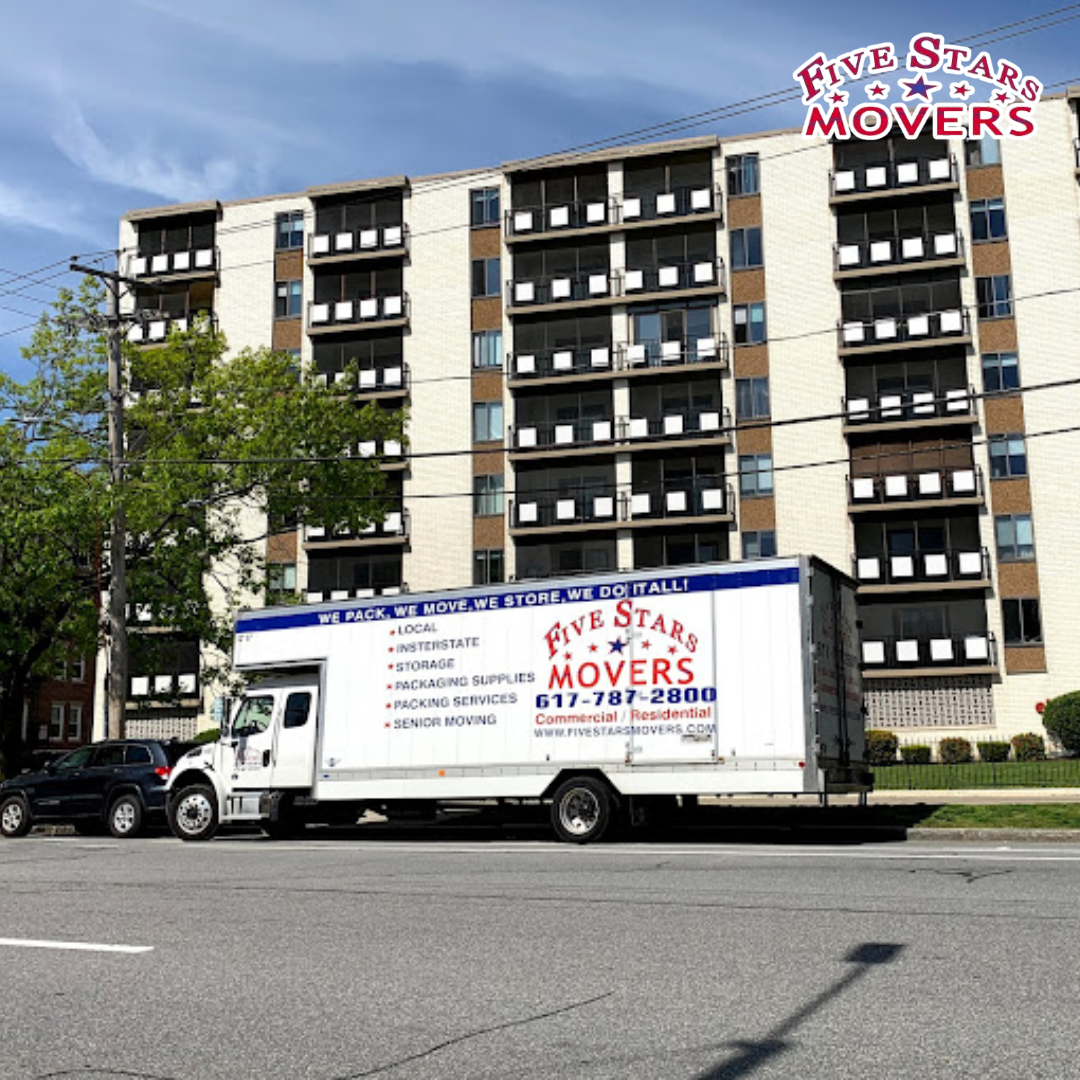A Comprehensive Guide to Navigating a Long-Distance Journey by Five Stars Movers
Newton, United States - September 24, 2024 / Moving Service Marketing Company /
Moving to a new home can be both exciting and overwhelming, especially when it involves a long-distance journey. Whether moving for a new job or starting fresh in a different city, navigating a cross-country move requires proper planning and organization to ensure a smooth and stress-free transition.
In this guide, Five Stars Movers provides tips and advice on navigating a long-distance move, from creating a detailed moving plan to moving your belongings efficiently.
Planning Your Long-Distance Move
Proper planning is key to a successful long-distance move. Start by creating a detailed moving plan that includes all the important tasks and deadlines to keep track of your progress. This will help you stay organized and reduce stress during this busy time.
Some essential tasks to include in your moving plan are:
- Researching moving companies: It's important to research different moving companies to find one that meets your needs and budget. Read reviews, compare quotes, and ask for recommendations from friends and family.
- Decluttering: Moving is an excellent opportunity to declutter your belongings. Take some time to sort through your items and get rid of anything you no longer need or want.
- Packing: Start packing non-essential items as early as possible. This will give you more time to carefully pack and label your belongings, reducing the risk of damage during transit.
- Updating your address: Remember to notify important parties like banks, credit card companies, and utility providers about your change of address.
Your moving plan should also include a realistic timeline for completing each task. Be sure to give yourself enough time to avoid any last-minute rush and delays. Following a detailed moving plan, you can stay on top of things and minimize potential roadblocks.
Budgeting and Timeline Creation
Developing a realistic budget and timeline is crucial for your move's financial and logistical success. The first step is to draft an initial budget encompassing all potential expenses. Begin by obtaining quotes from multiple moving companies to compare prices and services. A good rule of thumb is to get at least three quotes, which will provide you with a solid understanding of the market.
In addition to basic moving costs, consider incorporating the following expenses into your budget:
- Packing materials: Boxes, tape, bubble wrap, and protective blankets.
- Insurance: Depending on the value of your belongings, additional coverage may be necessary.
- Travel costs: Gas, food, and lodging if you're driving or flying to your new location.
- Temporary lodging: If there's any overlap between leaving your current home and moving into your new one.
Once your budget is drafted, you should create a detailed timeline outlining when each task needs to be completed before moving day.
To create an effective timeline, outline a comprehensive schedule two months before your move. Break down tasks week-by-week to ensure that every necessary detail receives attention. For instance, during the first week, focus on decluttering your space and deciding what you will keep, donate, or discard. As you progress through the following weeks, incorporate packing schedules and appointment setups for utilities at the old and new residences.
This systematic approach reminds us that moving can be overwhelming if it's not well organized; proper planning can help reduce a lot of that stress.
For example, set completion dates for packing specific rooms to avoid cramming everything into the last few days before your move.
Systematic Approach to Timeline
Here's a simple breakdown of how to structure your timeline:
- 8 Weeks Out: Declutter and categorize belongings; create a preliminary budget.
- 6 Weeks Out: Confirm moving date with movers; order packing supplies.
- 4 Weeks Out: Start packing non-essential items; make travel arrangements if needed.
- 2 Weeks Out: Notify utility companies about disconnections; arrange utilities at your new place.
- 1 Week Out: Wrap up all packing; confirm all details with the moving company.
- Moving Day: Final walkthrough of your current home; ensure everything is loaded correctly.
This structured approach will significantly reduce stress levels as you prepare for this significant chapter in your life. Each task becomes manageable when plotted against a clear visual timeline, allowing you to stay focused while tracking your progress toward a successful transition.
As you transition from budgeting and timelines, it's essential to focus now on how best to prepare your belongings for the journey ahead and maximize efficiency in the packing process.
Packing Essentials and Tips
Proper packing is essential to safeguard your belongings during a long-distance move. It's not just about tossing items into any box; it requires planning, organization, and the right materials to ensure you arrive at your new home with everything intact. Having the right supplies on hand can make all the difference in simplifying the packing process and protecting your items from damage.
Get the Right Supplies
Invest in high-quality packing materials such as different-sized boxes, bubble wrap, packing tape, and markers to clearly label your contents. Consider purchasing these supplies from large e-commerce websites where you can often find bulk discounts. For example, various moving boxes might be cheaper than buying them individually at a local store. Remember, specialty boxes are available for fragile items like dishes and clothing if they require extra care.
After gathering your supplies, strategically categorize your belongings. This step helps keep things organized and lets you prioritize your unpacking process. Picture the final stretch of your move: walking into your new living room after a tiring journey, only to find chaos because everything is mixed. Avoid this headache by grouping similar items before sealing up those boxes.
Categorize and Label Boxes
Labeling boxes by room and contents is an invaluable tip that simplifies unpacking at your new home. Imagine arriving exhausted after days on the road only to hunt through unlabeled boxes for essential items like bedding or kitchenware. Take the time to write down specific contents and their designated rooms—this will save you countless hours of frustration later on.
Purge unnecessary items before packing. Not only does this lighten your load physically, but it also reduces costs associated with moving company fees or truck rental rates based on weight. Clearing out what you don't need helps create a more organized packing experience and means fewer items to sort through when you settle in.
Donate or Sell Unneeded Items
A good rule of thumb is to consider parting ways with:
- Clothes you haven't worn in a year
- Old electronics that still function but have become obsolete
- Books you don't plan to read again
Each category contains things that may take up space and serve little purpose. By donating them or holding a garage sale, you're not just decluttering; you're also making space for a fresh start in your new home while earning extra cash or contributing to a good cause.
Selecting the Best Moving Services
The journey of a long-distance move begins long before you pack your belongings; it starts with choosing the right moving service. Just as you wouldn’t explore unknown waters without a good map, you shouldn’t start this journey without thoughtfully considering who will transport your things across state lines.
Research Reputable Companies
Begin by casting a wide net in your research, meaning looking beyond just one or two companies. Take advantage of online resources such as Yelp and Google Reviews, which can offer real customer feedback about their experiences. Pay close attention to comments about punctuality, transparency, and the companies' willingness to address concerns. A high number of satisfied customers often indicates a reputable company.
When exploring reviews, consider positive and negative feedback, as they give a balanced view of what to expect.
Obtain In-Person Quotes
Now that you've narrowed some options, it's time to get a clearer picture of the costs involved. Contact the top contenders and invite their representatives for an in-house estimate. This step allows you to gauge their professionalism and see your belongings firsthand, enabling them to provide a more accurate quote based on space and weight.
Once they provide written estimates, examine the fine print closely; ask for clarification on all fees associated with the move so no hidden costs will surprise you later. Transparency is key—if any crucial detail seems overlooked in their estimate, don't hesitate to bring it up. While personal recommendations can be invaluable, strive to merge those insights with solid research for optimal decision-making.
Armed with thorough research and quotes, you now know what is necessary to make an informed choice regarding your moving service. Each bit of diligence in this stage smooths out logistics and lays the groundwork for maintaining peace of mind throughout the process.
Update Your Address and Subscriptions
The last step before you hit the road is to update your address. This crucial task ensures that mail, bills, and subscriptions are redirected correctly to your new home.
USPS Change of Address
Start by filling out a change of address form with the United States Postal Service (USPS). You can do this in person at a post office or online through their website. The USPS offers several options for forwarding mail, including temporary or permanent.
Update Credit Card Information
Remember to update your credit card information with any recurring subscription services you have. This will prevent service disruptions and ensure you receive important updates or products during the transition period. Updating your billing address with any financial institution or credit card company is also a good idea to avoid potential issues.
Notify Important Contacts
In addition to updating your address with the USPS, inform important contacts of your move. This includes family, friends, utility companies, insurance providers, and government agencies. If you are leaving an apartment or rental property, you may consider setting up mail forwarding with your previous landlord or leasing office.
Taking care of these essential tasks before your long-distance move can minimize stress and ensure a smoother transition into your new home.
Moving can be challenging, but it doesn't have to be overwhelming with the right planning and organization. By following these tips, you can make your long-distance move as smooth and stress-free as possible. From decluttering and categorizing items to selecting reputable moving services and updating your address, each step plays an important role in ensuring a successful relocation experience. Contact Five Stars Movers for professional and efficient moving services to help you on your journey to a new home. Let them help you make your move a Five Star experience.

Contact Information:
Five Stars Movers
89 Adams St, Newton, MA 02458
Newton, MA 02458
United States
Tony Escobar
(617) 820-5186
https://fivestarsmovers.com/
Original Source: https://fivestarsmovers.com/media-room/


